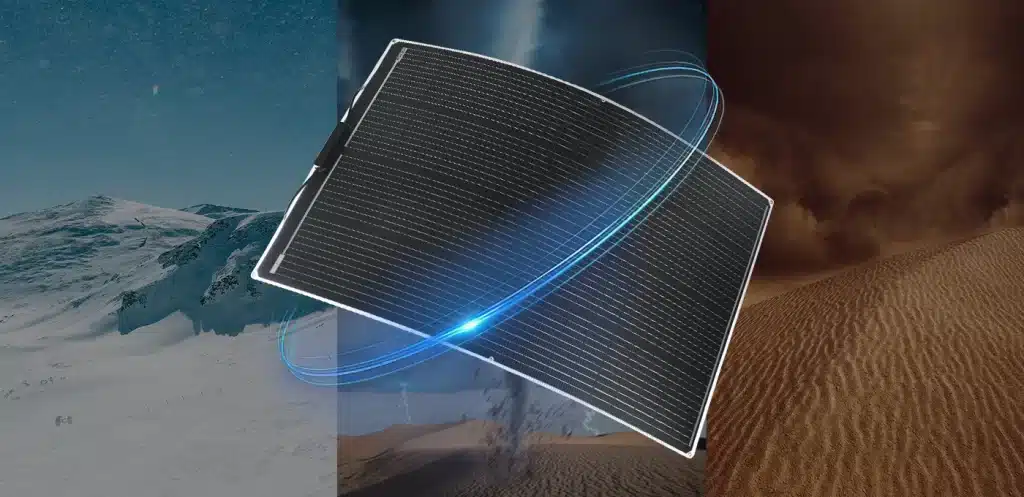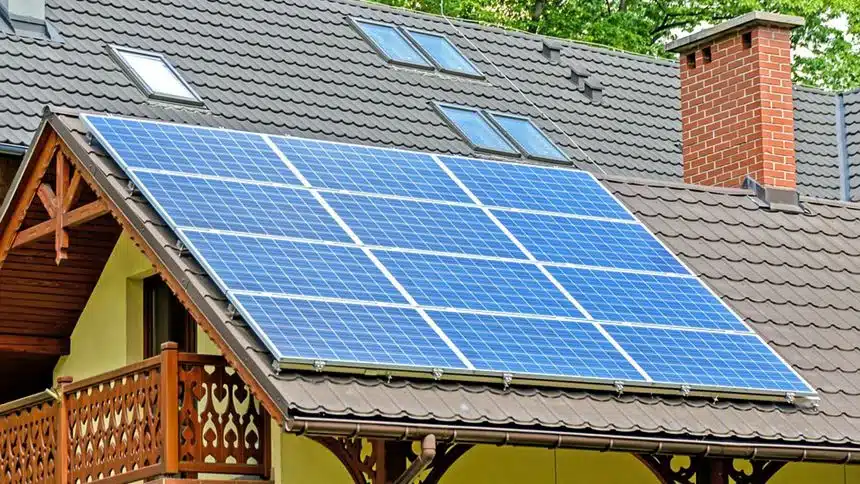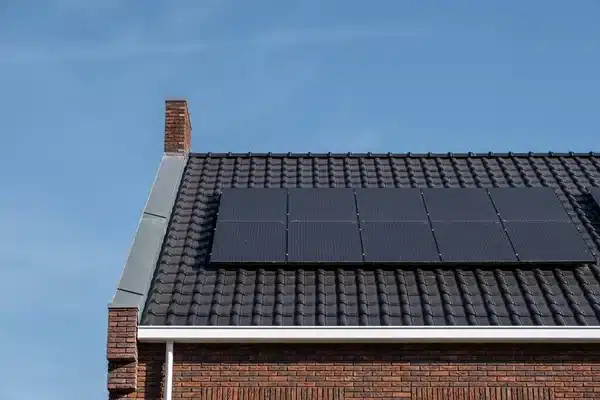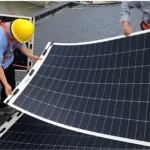As the push for renewable energy gains momentum, more homeowners and businesses are considering solar panels to reduce their carbon footprint and energy costs. Among the various options available, black solar panels have emerged as a popular choice. This article explains what black solar panels are, why they have their distinctive color, and how they compare to traditional solar panels, providing a comprehensive guide for those looking to invest in solar energy.
What Are Black Solar Panels?
Black solar panels, often referred to as monocrystalline solar panels, are made from a single crystal structure of silicon. This manufacturing process gives them a uniform, sleek black appearance, setting them apart from the blue-hued polycrystalline panels typically associated with traditional solar technology.
The Manufacturing Process
The manufacturing process of black solar panels involves growing a single crystal of silicon in a cylindrical form. This crystal is then sliced into thin wafers, which are used to make the solar cells. The high-purity silicon and the precise cutting process contribute to the panels’ high efficiency and distinctive black color. In contrast, traditional polycrystalline panels are made by melting multiple silicon crystals together, resulting in a less pure material with a bluish hue.
Why Are Black Solar Panels Black?
The black color of these panels is due to the way they are manufactured. Monocrystalline solar cells are cut from a single continuous crystal of silicon, which has higher purity than the silicon used in polycrystalline panels. This uniform crystal structure absorbs more sunlight and converts it into electricity more efficiently, resulting in their characteristic black color. Additionally, the black color is enhanced by an anti-reflective coating that maximizes light absorption.
Only Glass Panels on Rooftop?
When discussing black solar panels, rigid glass panels typically come to mind. However, black flexible panels are also popular for their versatility. These panels are lightweight and adaptable, making them suitable for non-traditional installations. People often install black flexible panels on marine vessels or RVs, where they can conform to curved surfaces and withstand dynamic conditions. This flexibility opens up more possibilities for solar energy use, extending beyond the conventional rooftop setups.

Comparing Black Solar Panels and Traditional Solar Panels
Efficiency
- Black Solar Panels: Known for their high efficiency, black solar panels typically convert 15-20% of sunlight into usable electricity. Their monocrystalline structure allows for better electron mobility, leading to higher performance, especially in limited space. The higher efficiency means that fewer panels are needed to produce the same amount of energy, making them ideal for small roofs or areas with limited space.
- Traditional Solar Panels: Traditional polycrystalline solar panels have an efficiency range of 13-16%. The multiple silicon crystals create boundaries that reduce the flow of electrons, slightly decreasing overall efficiency. While they may require more space to achieve the same energy output, they are still a viable option for many applications.
Aesthetic Appeal
- Black Solar Panels: Their uniform black color offers a modern and aesthetically pleasing appearance. They blend seamlessly with darker roofs and are preferred by those who consider visual impact an important factor. The sleek design of black solar panels can enhance the curb appeal of a property, making them a popular choice for residential installations.
- Traditional Solar Panels: These panels usually have a blue hue with a speckled appearance due to the presence of multiple silicon crystals. While effective, they are often considered less visually appealing. However, for large-scale commercial installations, aesthetics may be less of a concern compared to cost and efficiency.
blue is not so match to the environment black panels on black rooftop
Performance in Various Conditions
- Black Solar Panels: Perform well in low-light conditions, such as overcast days, due to their higher efficiency and better light absorption capabilities. This can be particularly beneficial in regions with less consistent sunlight, ensuring a more stable energy output throughout the year.
- Traditional Solar Panels: While effective, they may not perform as well as black solar panels in low-light conditions due to their lower efficiency. However, they still provide reliable energy production in a variety of settings, making them a versatile choice for many locations.
Cost
- Black Solar Panels: Generally more expensive due to the higher cost of production. The single-crystal silicon structure is more complex to manufacture, leading to higher prices. For consumers focused on maximizing energy efficiency and aesthetic appeal, the higher upfront cost can be justified by long-term energy savings and property value enhancement.
- Traditional Solar Panels: Typically less expensive, making them a more budget-friendly option. The simpler manufacturing process of polycrystalline panels reduces overall costs. For those with larger installation areas or tighter budgets, traditional solar panels can provide a cost-effective solution for renewable energy.
Durability and Warranty
- Black Solar Panels: Often come with longer warranties, sometimes up to 25 years or more, reflecting their durability and long-term performance. The high-quality materials and rigorous manufacturing standards ensure that these panels can withstand harsh weather conditions and maintain their efficiency over time.
- Traditional Solar Panels: While also durable, they might come with shorter warranties compared to black solar panels. However, they still offer reliable performance and are backed by industry-standard warranties, ensuring peace of mind for consumers.
Conclusion
Black solar panels, with their higher efficiency, modern appearance, and better performance in varied conditions, offer a compelling option for those looking to invest in solar technology. However, their higher cost can be a consideration for budget-conscious buyers. Traditional solar panels remain a viable and cost-effective alternative, though they may not offer the same level of efficiency or aesthetic appeal.
By understanding these differences, you know how to choose solar panel that meet your requirement.









